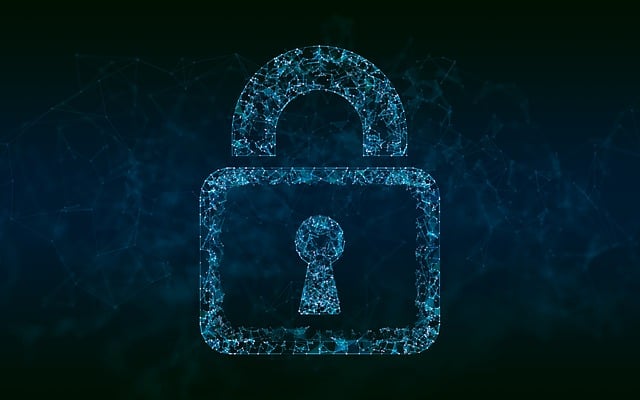Introduction
In today’s digital landscape, where cyber threats are constantly evolving, staying ahead of emerging trends and potential risks is crucial. As technology advances, so does the sophistication of cyberattacks. This article explores the future of cybersecurity, highlighting key trends and threats that individuals and organizations need to be aware of to effectively protect their digital assets.
I. Evolution of Cybersecurity
Cybersecurity has come a long way since its inception. This section provides a brief history of cybersecurity, showcasing its growing importance and the need for robust protection in an interconnected world. It emphasizes the impact of technological advancements on cybersecurity practices and highlights the significance of cybersecurity across various sectors and industries.
II. Emerging Trends in Cybersecurity
The future of cybersecurity is shaped by emerging trends that address the evolving threat landscape. This section delves into several key trends, including:
A. Artificial Intelligence (AI) and Machine Learning (ML) in cybersecurity:
– The role of AI and ML in threat detection and response
– Advancements in behavioral analytics and anomaly detection using AI
B. Internet of Things (IoT) security challenges:
– Addressing security risks associated with interconnected devices and networks
– Mitigating vulnerabilities and ensuring privacy in IoT environments
C. Cloud security and the rise of hybrid and multi-cloud environments:
– Securing data and applications in cloud-based infrastructures
– Managing security across diverse cloud platforms and hybrid environments
D. Blockchain technology for secure transactions and data integrity:
– Exploring the potential of blockchain in enhancing cybersecurity
– Leveraging blockchain for secure transactions and protecting data integrity
III. Threat Landscape and Cybersecurity Challenges
As technology advances, cyber threats become more sophisticated. This section focuses on the evolving threat landscape and the challenges it presents, including:
A. Ransomware attacks and the evolution of malware:
– Analyzing the rise of ransomware and its impact on organizations
– Strategies for prevention, detection, and effective recovery from ransomware attacks
B. Social engineering techniques and phishing attacks:
– Understanding the psychology behind social engineering
– Best practices for identifying and mitigating phishing scams
C. Advanced Persistent Threats (APTs) and nation-state cyber warfare:
– Exploring advanced threat actors and their sophisticated techniques
– Protecting critical infrastructure from nation-state-sponsored cyberattacks
D. Insider threats and the importance of employee awareness:
– Recognizing internal threats and addressing human vulnerabilities
– Establishing robust insider threat detection and prevention measures
IV. Data Privacy and Compliance
With the growing emphasis on data privacy and regulations, this section highlights the importance of data privacy and compliance in the future of cybersecurity. It covers:
A. General Data Protection Regulation (GDPR) and its impact:
– Ensuring compliance with GDPR and its implications for organizations
– Safeguarding personal data and mitigating privacy risks
B. Privacy concerns in the era of big data and data breaches:
– Balancing the benefits of big data with privacy protection
– Responding to data breaches and strengthening incident response capabilities
C. Data privacy regulations and compliance requirements:
– Navigating evolving data privacy laws globally
– Establishing privacy-centric practices and frameworks for compliance
V. Security Automation and Orchestration
As cyber threats become more complex, automation plays a vital role in cybersecurity. This section explores:
A. The role of automation in threat detection and response:
– Leveraging automation to improve incident response times and accuracy
– Streamlining security operations for efficient threat management
B. Security orchestration and incident response automation (SOAR):
– Coordinating and automating security processes and workflows
– Enhancing collaboration and integration across security tools
C. Benefits and challenges of implementing security automation:
– Increasing scalability and reducing human error through automation
– Addressing potential risks and limitations associated with automation
VI. Zero Trust Architecture
With traditional perimeter-based security models proving insufficient, the concept of Zero Trust Architecture is gaining momentum. This section covers:
A. The concept and principles of Zero Trust:
– Shifting from implicit trust to a model based on continuous verification and authorization
– Establishing a Zero Trust mindset within organizations
B. Implementing Zero Trust network security model:
– Securing access to resources based on user identity and context
– Adopting multi-factor authentication and granular access controls
C. Enhancing security posture with continuous authentication and access controls:
– Monitoring user behavior and applying dynamic access policies
– Adapting security measures based on risk assessment and real-time data
VII. Cybersecurity Workforce and Skills Gap
The shortage of skilled cybersecurity professionals is a growing concern. This section addresses:
A. Shortage of skilled cybersecurity professionals:
– Understanding the increasing demand for cybersecurity talent
– Encouraging and supporting cybersecurity career paths
B. Importance of cybersecurity education and training:
– Bridging the skills gap through specialized education programs
– Promoting continuous learning and professional development in cybersecurity
C. Addressing the skills gap through industry collaboration and initiatives:
– Fostering public-private partnerships to nurture cybersecurity talent
– Sharing best practices and knowledge through industry forums and initiatives
VIII. Collaboration and Information Sharing
The fight against cyber threats requires collaboration and information sharing. This section explores:
A. Public-private partnerships for combating cyber threats:
– Collaborating to share threat intelligence and insights
– Strengthening defense capabilities through joint efforts
B. Importance of information sharing and threat intelligence:
– Building a collective defense against evolving threats
– Developing proactive strategies based on shared knowledge
C. Collaborative approaches to strengthen cybersecurity defenses:
– Engaging in industry-wide collaboration and knowledge exchange
– Leveraging collective resources for more robust security measures
Conclusion
As the digital landscape continues to evolve, the future of cybersecurity presents both challenges and opportunities. By staying informed about emerging trends, understanding potential threats, and implementing proactive measures, individuals and organizations can protect their digital assets effectively. Embracing technological advancements, fostering collaboration, and investing in skilled professionals will be crucial for building a secure digital future.

